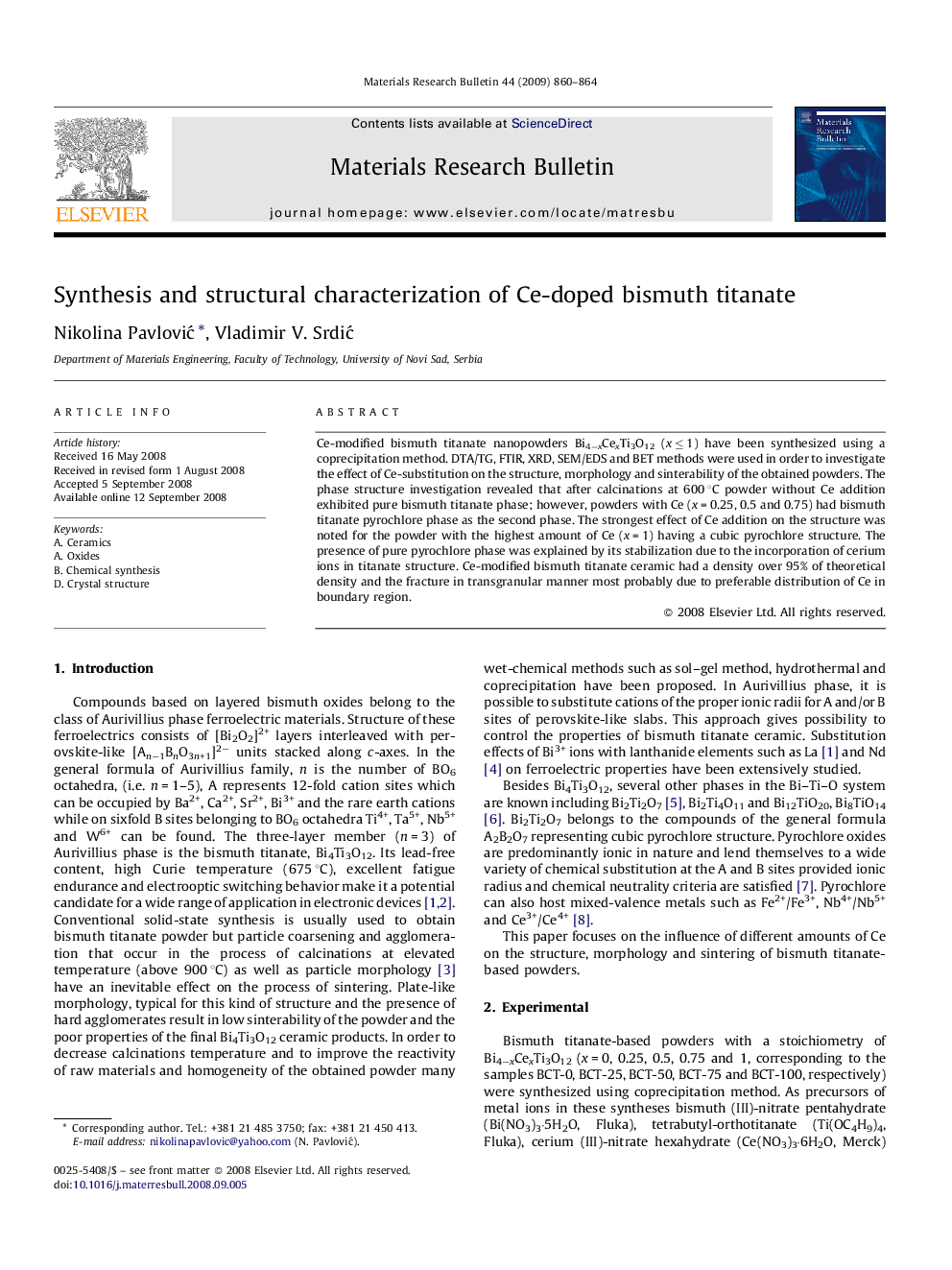| Article ID | Journal | Published Year | Pages | File Type |
|---|---|---|---|---|
| 1491096 | Materials Research Bulletin | 2009 | 5 Pages |
Ce-modified bismuth titanate nanopowders Bi4−xCexTi3O12 (x ≤ 1) have been synthesized using a coprecipitation method. DTA/TG, FTIR, XRD, SEM/EDS and BET methods were used in order to investigate the effect of Ce-substitution on the structure, morphology and sinterability of the obtained powders. The phase structure investigation revealed that after calcinations at 600 °C powder without Ce addition exhibited pure bismuth titanate phase; however, powders with Ce (x = 0.25, 0.5 and 0.75) had bismuth titanate pyrochlore phase as the second phase. The strongest effect of Ce addition on the structure was noted for the powder with the highest amount of Ce (x = 1) having a cubic pyrochlore structure. The presence of pure pyrochlore phase was explained by its stabilization due to the incorporation of cerium ions in titanate structure. Ce-modified bismuth titanate ceramic had a density over 95% of theoretical density and the fracture in transgranular manner most probably due to preferable distribution of Ce in boundary region.
